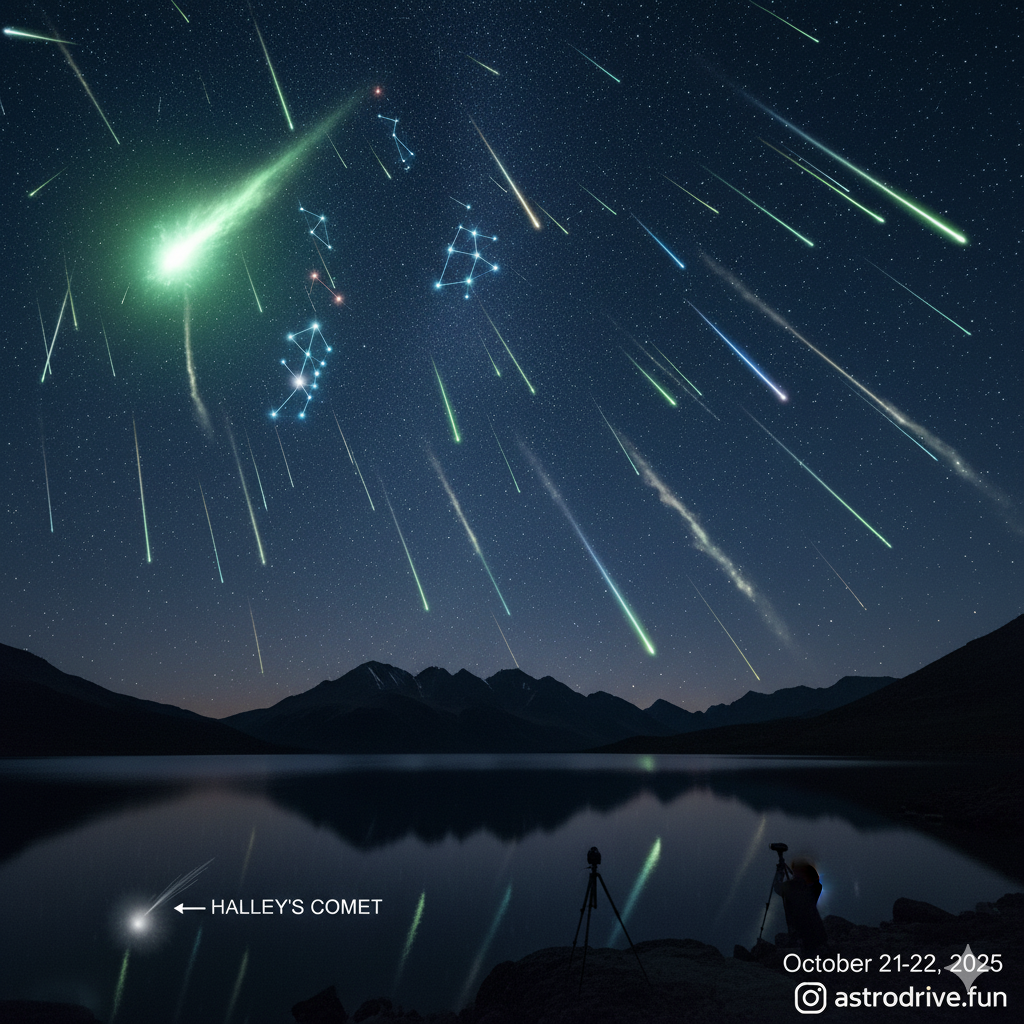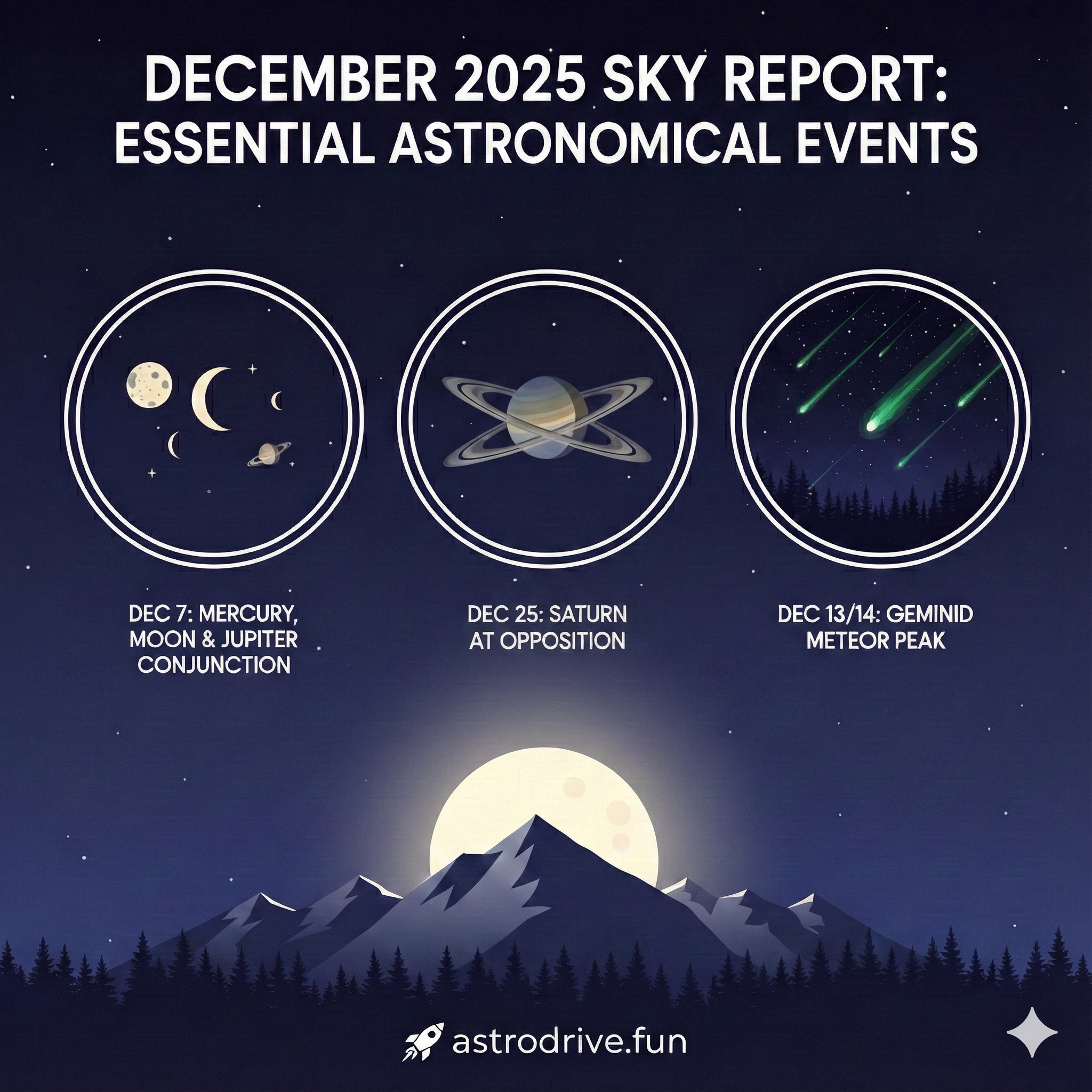Don’t Miss the Orionid Meteor Shower 2025: Halley’s Comet’s Fiery Farewell!

Hey, fellow sky-gazers and cosmic adventurers! Your favorite astrodrive.fun writer here, bringing you some seriously exciting news about an upcoming celestial showstopper. If you’ve been waiting for a reason to bundle up, grab a hot drink, and simply look up, this is it!
On the night of October 21–22, 2025, the Orionid Meteor Shower will light up our night sky in one of the most dazzling celestial events of the year. Trust me, you absolutely do not want to miss this!
The Night the Sky Comes Alive: Orionid Meteor Shower Peaks October 21–22
Known for its fast, bright meteors and sometimes fiery trails, the Orionids are the perfect autumn treat. Imagine streaks of light, like cosmic fireworks, painting the dark canvas above you. These aren’t just random bits of space dust; they’re tiny remnants from one of the most famous celestial visitors in our solar system: Halley’s Comet!
Yes, that’s right! Every year around this time, Earth passes through a stream of debris left behind by Halley’s Comet on its ancient journeys around the Sun. As these tiny particles (some no bigger than a grain of sand!) hit our atmosphere at incredible speeds, they burn up, creating those brilliant flashes we call meteors. It’s like a cosmic litter-picking spree, but infinitely more beautiful!
Why the Orionids are a Must-See
- Speed Demons: Orionid meteors are notoriously fast, zipping into the atmosphere at about 66 kilometers (41 miles) per second. This high speed often leads to very bright, long-lasting trails.
- Fiery Colors: Keep an eye out for meteors with yellowish-green or reddish-orange hues, especially the brighter ones. These vibrant colors are a result of different elements burning up in our atmosphere.
- Halley’s Legacy: How cool is it that you’re watching bits of the very comet that fascinated ancient civilizations and returns to our inner solar system only every 75-76 years? This is your annual connection to a true legend of the cosmos.
- The Radiant: The meteors appear to originate from a point (the radiant) near the constellation Orion the Hunter. You don’t need to stare directly at Orion; meteors can appear anywhere in the sky, but tracing their path backward will lead you to this constellation.
How to Best Enjoy the Shower (and Maybe Even Photograph It!)
You don’t need any special equipment to enjoy the Orionid Meteor Shower – just your eyes!
- Find a Dark Sky: This is crucial. Get away from city lights as much as possible. A rural area, a park, or even your backyard if you have minimal light pollution, will work best.
- Look Up After Midnight: The best viewing hours are typically after midnight local time, continuing until the pre-dawn hours of October 22nd. This is when your location on Earth is turning into the meteor stream, offering the best view.
- Let Your Eyes Adjust: Give your eyes at least 20-30 minutes to adapt to the darkness. Avoid looking at your phone screen!
- Dress Warm: Even if it’s not freezing, sitting still outside for a while can get chilly. Blankets, warm clothes, and a thermos of hot cocoa are your best friends.
- Recline: Bring a comfortable chair or a blanket to lie down on. Staring straight up for hours can be tough on your neck!
- Photography Tips (for the pros!):
- Use a wide-angle lens.
- Mount your camera on a sturdy tripod.
- Set a high ISO (e.g., 1600-6400).
- Use a wide aperture (f/2.8 or lower if possible).
- Take long exposures (15-30 seconds).
- Set your camera to continuously shoot. Patience is key!
A Little Cosmic Magic from Halley’s Comet
The Orionid Meteor Shower is a stunning reminder of our place in the cosmos and the incredible journeys celestial bodies undertake. It’s a chance to connect with something ancient, something beautiful, and something truly universal.
So mark your calendars for October 21–22, 2025. Look up, make a wish, and enjoy the celestial fireworks brought to you by Halley’s Comet. This is one show you won’t want to miss!
#OrionidMeteorShower #HalleyComet #MeteorShower2025 #Stargazing #Astronomy #CelestialEvent #astrodrivefun #Space



I really like the you depict
Intersting fact…
I was waiting for this kinda news… And now… Bingo💫
Roulette’s allure is fascinating – that blend of chance & calculated risk! Seeing platforms like nustar game download offer diverse games (slots, live casino) makes access easier for Filipino players. Verification steps seem solid too – good for security!
This is a great read! Tools like the Lovart AI Design Agent are changing how we approach creative workflows-especially with its smart suggestions and canvas integration. Definitely worth keeping an eye on!
That’s a fascinating point about creative control! Tools like AI Nano Banana are changing how we approach image editing – physics-aware transformations sound incredible, especially for mobile workflows! Really exciting stuff.
It’s crucial to verify ID for online accounts – security is paramount! Seeing platforms like phil168 games prioritize KYC gives me confidence. Responsible gaming & secure transactions are key for a positive experience. 👍
Interesting analysis! Seeing more platforms like wowph online casino cater to the Filipino market is great. Quick registration & instant deposits-like they offer-are key for accessibility & enjoyment! 👍
Sprunki Incredibox is a brilliant evolution of the original, adding fresh beats and visuals that keep the creativity flowing. Check it out at Sprunki Incredibox for a new twist on music mixing fun.
Playsbobet – hmmm, feels kinda familiar. Worth checking out if you’re into that sort of thing. Could be a laugh! playsbobet
GGWin, eh? Signed up yesterday. Layout is decent and found a few good bets. Withdrawals were prompt, which is always a good sign. Could use some more promotions though. Worth a look see. ggwin
Looking into cwinzaffiliate program. Heard they have a good payout structure for affiliates. Anyone have experience with them? The website looks legit and they seem to have good support! Check them out for your affiliate needs! cwinzaffiliate
Alright, vina24hmb caught my eye. Mobile experience is smooth, no lag. Content’s solid. I’d give it a thumbs up for usability. Give it a go: vina24hmb
5gbet10, huh? Name’s kinda catchy! Did a quick scroll and seems like standard stuff. Maybe worth a look if you’re looking for new places to get your bets on. Here’s the link: 5gbet10